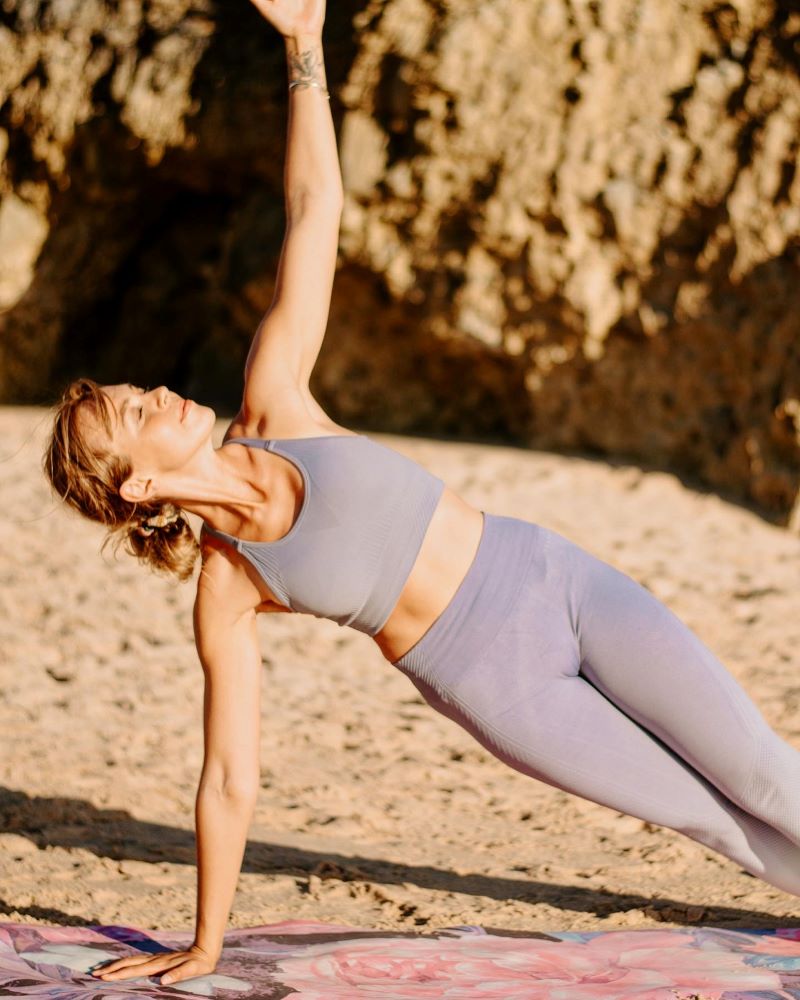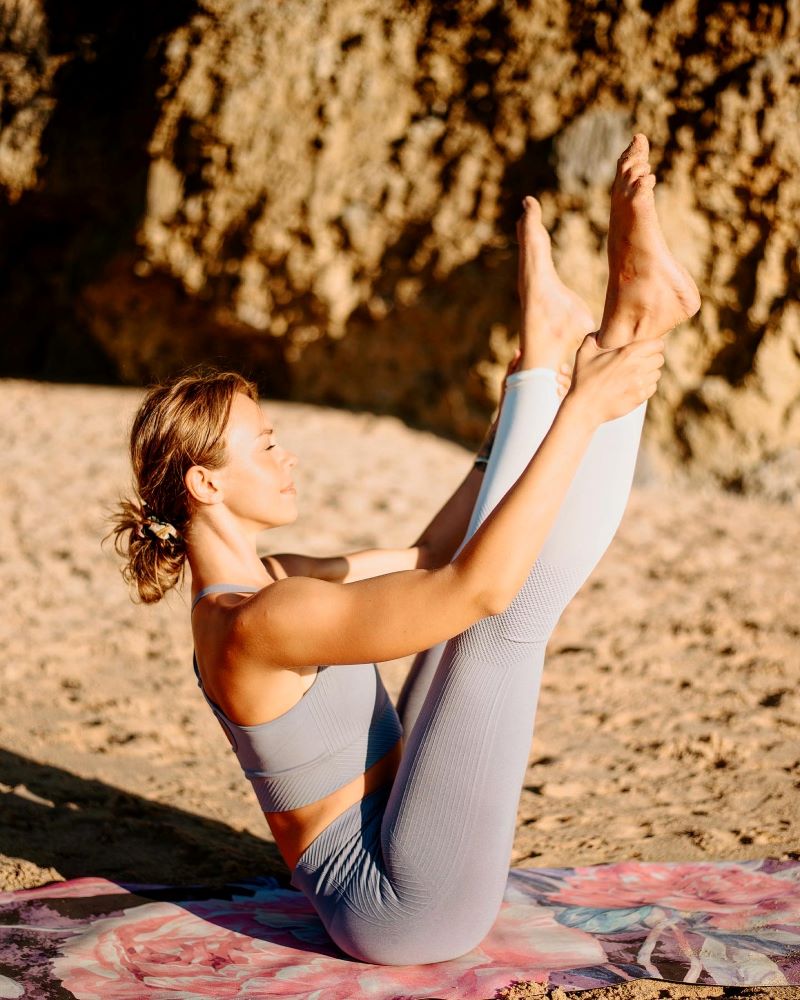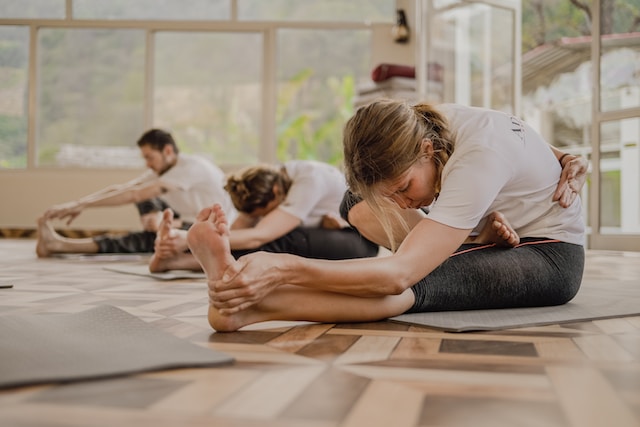Pilates is a popular form of exercise that offers a wide range of not only physical, but mental benefits. Pilates is a body – mind form of exercise that emphasises core strength, overall flexibility, mobility, and strength. Pilates helps with body alignment, posture and body coordination. Pilates was developed by Joseph Pilates in the early 20th century.

In this article we will look at the benefits of Pilates as well as the importance of breathing. Whether you are thinking about starting your Pilates journey, or you are already practising, this article gives you valuable information about why to practice and the goal of the practice.
“Pilates is complete coordination of body, mind and spirit.”
Joseph Pilates
Let’s first look at the benefits that Pilates has to offer.

1. Better Body Alignment and Posture
Pilates helps to coordinate the body’s musculoskeletal structure such as the bones, muscles and joints so they are in the correct position. Strong and proper body alignment allows the body to function more efficiently – for instance, when the body alignment is correct the result of it can be improved digestion, less back pain, better oxygenation of the blood, less headache…etc
– Strong Core Muscles
Pilates emphasises strong core muscles, including the abdominals, lower back and pelvic floor. Performing the exercise is controlled and precise. A strong core, in this case, referring to deep core muscles, leads to healthy body alignment and posture.
– Neutral Position of the Spine
The other aspect of good posture is working on alignment of the spine – so called Neutral position of the spine. In Pilates we are learning to maintain the Neutral Position of all the parts of the spine – Lumbar, Thoracic and Cervical. This leads to beautiful posture, when the chest is open, shoulders are relaxed and the neutral position of the spine is maintained.
Joseph Pilates
“A man is as young as his spinal column.”
2. Improved Body Coordination and Neuromuscular Activation
Multiple planes of motion used in Pilates challenge the body coordination in different ways. Pilates leads to Neuromuscular activation. Neuromuscular Activation (brain to muscle connection) heightens body awareness and controls joint stability and posture.
Neuromuscular Activation enables the body to move with precise control in a specific plane of motion. In this way it creates a body-mind connection that trains the brain to communicate more effectively with the rest of the body.
3. Leaner Body Shape
Pilates is a complete body workout that tones various muscle groups, particularly the core muscles, abs and the muscles that support your spine. Consistency in Pilates leads to leaner body shape, toned lean muscles, strong pelvic floor and sculpted body shape.
“Take care of your body, it is the only place you have to live.”
Jim Rohn
4. Flexibility and Mobility
Pilates is a highly effective method for enhancing muscle flexibility and joint mobility. Every Pilates sequence should combine flexibility, mobility and strength exercises. Here, Neuromuscular Activation comes into the place. As Body awareness is heightened and we are more aware of our body and its limitations it contributes to a safer way of stretching. Pilates avoids overstretching. It is a rather dynamic and progressive movement. The result being improved flexibility and mobility without any strain or injury.
5. Happy Hormones
Pilates and the breathing pattern used in Pilates reduces stress. Lowering stress and the stress hormone (cortisol) is associated with increased serotonin and dopamine levels. Serotonin and Dopamine are happy hormones that brighten up our mood, emotions, learning process, sleep or blood flow. Engaging in physical activity like Pilates can trigger endorphins (they interact in the brain and create a sense of well-being and contentment). Increased endorphins potentially improve dopamine levels which is why Pilates can positively impact the mood, boost body image and self-esteem.
6. Breath is Life – Chest open, Core engaged!
The breath is an essential part of every Pilates sequence. Thoracic Breath – Chest Breath involves expansion (on inhalation) and contraction (on exhalation) of the chest and ribcage. Deep breath to the rib cage increases spaces in between the ribs and stretches intercostal muscles. Thoracic breath affects posture as we lengthen the spine on inhalation and create a space in between the vertebrae.
Core awareness and engagement is present as well. On every exhalation we contract the core muscles and pelvic floor muscles – creating a strong body foundation.
“Master your breath, let the self be in bliss, contemplate on the sublime within you.”
T. Krishnamacharya
7. Mind Wellbeing
Pilates has a holistic approach that acknowledges that everybody is different, therefore the most important thing to be aware of is how you feel during the practice. This gives us (Pilates instructors) flexibility to adjust the class accordingly (to the level of practitioners, health issues, rehabilitation, injury prevention or possible post-natal or prenatal approach).
Physical movement, controlled breathing, and dynamic exercises puzzled all together create a perfect mindful form of exercise. Even if you have never tried Pilates before, you don’t have to be afraid. Pilates brings people together and provides a sense of community and solidarity.

Lucie Petová (founder of Yoga with Luu, author of this article)
“Pilates Nourishes both – the Body and the Mind.”
Photo by Louise Vildmark on Unsplash



